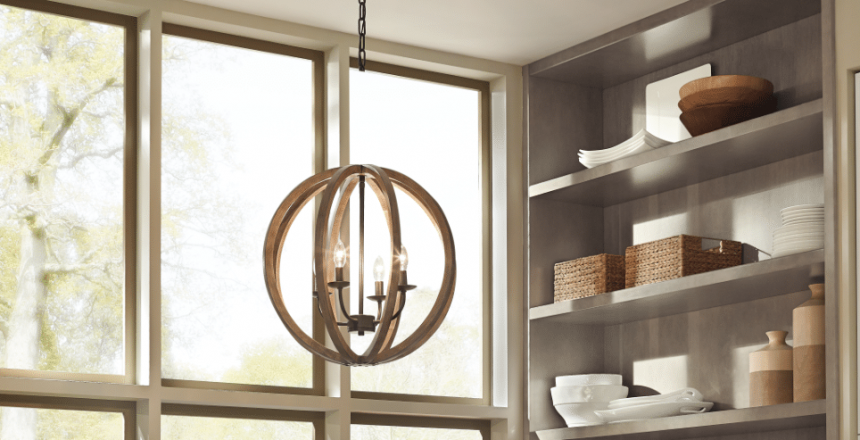Open shelving has been a popular trend for decades, sometimes out of necessity and sometimes by choice. This type of floating shelf adds a unique element to any room. Depending on how you go about designing your space and creating your decor scheme, open shelving can be lovely addition or an eyesore. Follow these top tips to make your floating shelves are both visually pleasing and functional.
Use live edge shelving: In a farmhouse-style kitchen, open shelving is often made from stained or reclaimed wood, but for a unique, natural look, use live edge shelving. It’s not only beautiful but also very strong and coordinates well with classic and contemporary design styles. Although live edge shelving is more expensive, it serves as a stunning statement piece to any kitchen.
Stick to a color scheme: Pick a color scheme that goes along with the rest of the kitchen and stick with it. The scheme can include multiple hues, which will give you more options when selecting items to display on the shelves. Or, if you want a clean, mellow look, use all whites or grays. If the rest of your kitchen is monotone in terms of color, items on your shelves are a great way to add a pop of color. If your open shelves are in another part of the home, such as the living room, it’s nice to coordinate books or frames by color.
Don’t overload: This often happens with open shelving. You must remember it’s not a cabinet or drawer where junk and disorganization can be hidden. Items on an open shelf are on display for all to see so you need to make it look clean and organized. Further, don’t use them for a drop zone when it comes to things like mail, magazines and other extraneous items.
Organize by area: When organizing the items on your open shelves, it’s helpful to think about zones. For instance, designate a section for plates, another for mugs and another for dry goods. This way, there is a flow. If the shelves are in another part of the home, do something similar with books, baskets and other pieces.
Keep shelves clean and dusted: This should be a no-brainer, but you would be surprised. It’s not often we pull out everything in our closed cabinets or drawers and give them a good cleaning and that’s okay because no one is looking at them very often. In contrast, open shelves are on full display for everyone to see so you want to make sure the shelves are dusted and the display items are regularly wiped down or washed.
Repackage dry goods: Open shelving is a great place for items such as sugars, flour, seeds, nuts and other dry goods. If you plan to store this type of item on floating shelves, however, we suggest repackaging them into mason jars or another type of nice container so it adds to the aesthetic appeal of the shelving unit.
Avoid appliances and plastic: Floating shelves are not the place for appliances or plastic items. Appliances are for cupboards or pantries, or at the most, the countertop. Open shelves are meant to add some fun and pizzazz to a room so don’t waste the space with toasters and coffee makers. Refrain from displaying plastic items and save your open shelves for glass, ceramics, books, pottery, herbs, flowers and framed prints.
Fill them with items you use most often or least often: This tip can go either way. You can fill your open shelves with items you use most frequently like herbs, oils, special utensils and your favorite cookbooks, or you can adorn the shelves with things you use least often or not at all, such as framed photos, classic novels and vases filled with flowers.
There is truly a multitude of ways to utilize and decorate open shelving, whether it’s in your kitchen or another room in the home. If this type of shelving is something you’re interested in, our design team can guide you through entire process, from obtaining the right kind of material to types of décor items.




